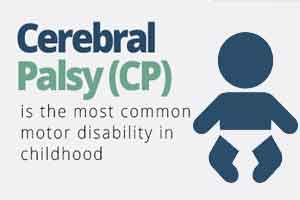- Home
- Editorial
- News
- Practice Guidelines
- Anesthesiology Guidelines
- Cancer Guidelines
- Cardiac Sciences Guidelines
- Critical Care Guidelines
- Dentistry Guidelines
- Dermatology Guidelines
- Diabetes and Endo Guidelines
- Diagnostics Guidelines
- ENT Guidelines
- Featured Practice Guidelines
- Gastroenterology Guidelines
- Geriatrics Guidelines
- Medicine Guidelines
- Nephrology Guidelines
- Neurosciences Guidelines
- Obs and Gynae Guidelines
- Ophthalmology Guidelines
- Orthopaedics Guidelines
- Paediatrics Guidelines
- Psychiatry Guidelines
- Pulmonology Guidelines
- Radiology Guidelines
- Surgery Guidelines
- Urology Guidelines
Walk-DMC to Improve Cerebral Palsy Surgery Outcomes in Children

Children with cerebral palsy frequently undergo invasive surgeries lengthening tendons, rotating bones, transferring muscles to new locations in hopes of improving their physical ability to walk or move.
While the surgeries work beautifully for some patients, other children see little to no improvement after those operations.
Researchers from the University of Washington’s Department of Mechanical Engineering, in collaboration with partners from Gillette Children’s Specialty Healthcare, have developed a new quantitative assessment of motor control in children with cerebral palsy called Walk-DMC, which could help predict which patients are or are not likely to benefit from such aggressive treatment.
The new measure is based on electromyography (EMG) data, a tool already commonly used to evaluate patients with cerebral palsy that uses electrodes placed on the skin to monitor muscle activity. Historically, doctors have relied on experience and more subjective clinical measures to evaluate a patient’s motor control.
In one of the largest studies of treatment outcomes in cerebral palsy to date, the team found that a patient’s Walk-DMC score before treatment was significantly linked with how much the patient’s gait, walking speed and function improved after surgery. The study was published online Apr. 21 in Developmental Medicine & Child Neurology.
“Only about 50 percent of children have significant improvement in their movement after these highly invasive surgeries,” said Kat Steele, a UW assistant professor of mechanical engineering. “Our motivation has really been to figure out how we can push up these success rates.
The team recently won a $1.5 million grant from the National Institute of Neurological Disorders and Stroke to further evaluate Walk-DMC’s potential in clinical settings.
Cerebral palsy is caused by an injury to the brain that happens near birth, and affects about three in 1,000 children. But as every brain injury is unique, individuals with cerebral exhibit a wide collection of symptoms and conditions and respond to treatment differently.
Doctors had theorized that patients with better motor control the brain-to-muscle connections that allow someone to coordinate movement prior to surgery were likely to fare better after surgical interventions. Common surgeries for individuals with cerebral palsy typically fix musculoskeletal or anatomical issues that limit physical movement but don’t necessarily address how well a patient can control those muscles.
So far, however, there has been no standardized way to quantify motor control in cerebral palsy.
In a previous study, Steele and her colleagues demonstrated how to analyze muscle synergies or patterns of coordinated muscle activity in individuals with cerebral palsy from data already commonly collected in the clinic. They found that children with CP employ motor control strategies that are similar to adult stroke survivors, and are considerably simpler than the strategies employed by unimpaired individuals. In both CP and stroke, this impaired motor control is thought to contribute to impaired movement and function during daily life.
The team then developed algorithms to translate the complexity of a patient’s motor control strategies into a single number, which represents the patient’s Dynamic Motor Control Index During Walking, or Walk-DMC.
Two cerebral palsy patients may have exactly the same score on the Gait Deviation Index, a commonly used assessment that measures joint angles to evaluate how “normally” a patient walks. But the researchers found those two patients may actually have widely different Walk-DMC scores, which measures their underlying muscle coordination and motor control.
In the current study of 473 children with cerebral palsy who had undergone surgical treatment, the researchers found that children with higher walk-DMC scores prior to surgery had better treatment outcomes even after controlling for other factors like age and prior treatment.
“Two individuals can walk very similarly but have very different motor control strategies,” said Steele, who directs the UW Human Ability & Engineering Lab. “These results suggest that motor control is uniquely and independently associated with outcomes and can help us decide when you might recommend surgery and when you might be more conservative in treatment.”
The team’s next steps include analyzing whether motor control can change after treatment, and working to expand options for children who are less likely to be good surgical candidates.
“The kids with good motor control are likely to get better once you fix their musculoskeletal issues because they have the capacity to control their muscle groups and limbs,” Steele said. “The big question is: What can we do for the other kids? If muscle control can change, that opens the door for more rehabilitation options. And if it can’t, that’s good to know so we can help optimize their movement and quality of life.”
The ongoing research is funded by the National Institute of Neurological Disorders and Stroke within the National Institutes of Health.
Co-authors include Michael Schwartz, director of biomedical engineering research at Gillette Children’s Specialty Healthcare, and Adam Rozumalski, an engineer at Gillette Children’s Hospital in St. Paul, Minn.

Disclaimer: This site is primarily intended for healthcare professionals. Any content/information on this website does not replace the advice of medical and/or health professionals and should not be construed as medical/diagnostic advice/endorsement or prescription. Use of this site is subject to our terms of use, privacy policy, advertisement policy. © 2020 Minerva Medical Treatment Pvt Ltd